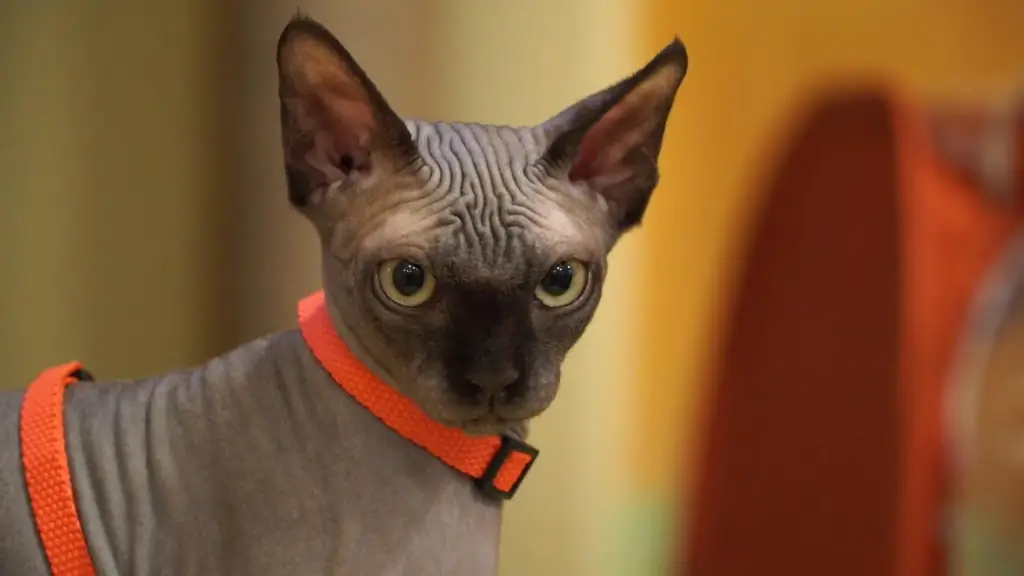
Table of contents:
- Canadian Sphynx: the naked wonder of the feline family
- The origin story of the Canadian Sphinx
- Features of the breed
- Character traits of Canadian hairless cats
- What diseases are the Canadian sphinxes prone to?
- How to choose a kitten
- Features of care for bald cats
- How to breed Canadian sphinxes
- Owner reviews
- Author Bailey Albertson [email protected].
- Public 2024-01-17 22:26.
- Last modified 2025-06-01 07:32.
Canadian Sphynx: the naked wonder of the feline family

Cats have been living with humans for many centuries. During this time, many new breeds have been bred. One of the young unusual species of cats is the Canadian Sphynx.
Content
- 1 History of the origin of the Canadian Sphinx
-
2 Features of the breed
-
2.1 Appearance
- 2.1.1 Color
- 2.1.2 Photo gallery: varieties of colors of the Canadian sphinxes
-
-
3 Character Traits of Canadian Hairless Cats
-
3.1 Positive qualities and disadvantages of the breed
3.1.1 Video: interesting facts about the Canadian sphinxes
-
- 4 What diseases are the Canadian Sphynx susceptible to
-
5 How to choose a kitten
- 5.1 Table: differences between the Canadian, Don Sphinx and Peterbald
- 5.2 How much do Sphynx kittens cost
-
6 Features of care for bald cats
- 6.1 Bathing
- 6.2 Care of ears, eyes, claws
- 6.3 Video: how to care for the Canadian Sphynx
- 6.4 Toilet
-
6.5 Nutrition of Canadian Sphynxes
- 6.5.1 Finished feed
- 6.5.2 Natural products
-
7 How to breed Canadian Sphynxes
- 7.1 How is the pregnancy going
- 7.2 Castration and sterilization
- 8 Owner reviews
The origin story of the Canadian Sphinx
The first information about hairless cats can be found in the works of ancient times. Scientists suggest that the ancestors of the sphinxes were popular with the Aztecs. The hairless cats that lived with them were called Mexican. But unfortunately, the last animals of this breed disappeared at the beginning of the 20th century. Naked purrs appeared periodically in ordinary cats. But it was impossible to create a new breed.
A new page in the history of the breed of hairless cats began only in 1966, when a bald baby was found among small kittens in Canada. They decided to call him Prun. When he grew up, he was crossed with his mother. The litter included both hairless kittens and regular babies. Subsequently, Prune was crossed with sisters and daughters. So a new breed appeared.
In 1971, the Cat Fanciers Association (CFA) did not recognize the Canadian Sphynx as a separate breed. This happened only in 2002. At the same time, the breed standard was developed. Currently, the Canadian Sphynxes are recognized by all world felinological organizations.
Features of the breed
According to the breed standard, the Canadian Sphynx must have the following parameters:
- the head is of medium size, elongated in shape with pronounced cheekbones;
- the muzzle is rounded wedge-shaped, whisker pads are clearly defined;
- whiskers (whiskers) according to the TICA (International Cat Association) standard should be short, as if broken off, according to the WCF (World Cat Federation) standard, their presence is desirable, but the complete absence of a mustache is also allowed;
- ears are large and wide, without hair on the inside (some hair is allowed outside and at the base of the ears);
- the eyes are large, lemon-shaped, the color of the iris can be any;
- the body is of medium length with a broad chest and a rounded belly, very muscular;
- the tail is long, tapering to the tip, a little hair is allowed at the end (the so-called lion's tail);
- paws of medium length, proportional to the body;
- hind legs are slightly longer than front ones;
- paw pads are thick, fingers are long;
-
there must be folds on the body.

Canadian sphinx The Canadian Sphynx must meet strict standards
The disadvantages of the breed include:
- small pet size;
- very fragile or, conversely, too strong constitution;
- lack of folds on the head;
- very narrow head;
- stubborn character;
- excess wool.
Representatives of the breed do not receive prizes:
- with wavy hair;
- with signs of artificial hair removal;
- hostile and aggressive.
Appearance
The male adult Canadian Sphynx weighs about 5 kg, while the female weighs 3.5 kg.
It is believed that the sphinx is a completely naked cat. But the Canadian Sphynxes, despite the fact that outwardly seem hairless, still have a small fluff on some parts of the body. Most often, short soft hair is found on the legs, tail, from the outer part of the ears, and the scrotum. It feels like suede to the touch. On other parts of the body, fur may be completely absent, or there may be a soft fluff that resembles a peach skin.
Color
The color of the sphinx is determined by the color of the skin. It can be different.
The WCF breed standard recognizes all colors. And the CFA standard recognizes all colors, except for those that differ in zoning (alternating dark and light stripes on each hair). The main ones are:
- color, consisting of one color (white, black, blue and others);
- tortie, which is represented by a combination of two (black and red or blue and white) or three (red, black and white) colors;
- tabby spots with patterns, stripes or small specks;
- bicolor, which is a combination of red, black and white colors in various proportions;
- color point, which is a darker coloration on the tips of the ears, tail, feet and nose.
Photo gallery: varieties of colors of the Canadian sphinxes
-

Canadian Sphynx tortoiseshell - Tortoiseshell color is almost always only in females
-

Canadian Sphynx bicolor - Bicolor is a combination of several colors in the color of the animal
-

Color point canadian sphinx - Color-point cats have a mysterious look
-

Tabby canadian sphinx - Tabby is a color with a pattern of stripes or combinations of spots
-

Canadian sphinx white - White Canadian Sphynxes often have blue eyes
The color of the eyes of the Canadian Sphynx, according to the CFA standard, can be any. WCF requires eye color to blend in with coloration. And TICA allows green and greenish brown, but ideally also requires color matching.
Character traits of Canadian hairless cats
Sphynxes have a very kind, patient character and a good attitude towards dogs. These cats can be left alone with children and do not worry about both of them. They are not jealous, very patient and smart. Sphinxes often choose a favorite host or even a guest.
Males of the Canadian Sphynx tend to dominate. They consider themselves the masters of the house, are independent and very curious. Any event does not pass by, any thing will be studied. Cats are softer and more tender. They easily win the trust and love of their master. But females need more attention to themselves and do not let them forget about their person: they will chase you and lick your face until they get bored. Sphynx females are great lovers of cleanliness. They are able to lick themselves for hours. The completed washing procedure can be repeated after 2-3 hours.
Many people think Canadians are very aggressive. But this is a misconception. My parents have a Canadian Sphynx. And he is very friendly, active and not afraid of strangers. The Sphinxes are highly intelligent.

The Canadian Sphynx can be left with the child
Positive qualities and disadvantages of the breed
Like any animal, the Canadian Sphynx has both positive and negative properties.
The positive qualities include the fact that they:
- playful;
- active;
- curious;
- gentle;
- affectionate to the owner;
- get along well with other animals;
- patient;
- smart;
- love children.
And the negative qualities are as follows:
- they need daily grooming and frequent bathing;
- afraid of the cold;
- may seem intrusive.
Video: interesting facts about the Canadian sphinxes
What diseases are the Canadian sphinxes prone to?
In the cubs of the Canadian Sphynx, the eyes open much earlier than in the crumbs of other breeds. In this regard, they are more likely to develop conjunctivitis (inflammation of the mucous membrane of the eyes). Signs of this disease are discharge from the eyes, which may be mucous or purulent. Treatment involves cleansing the eyelids from discharge and instilling eye drops or lubricating with an ointment (tetracycline or hydrocortisone). In order not to aggravate the disease, only a veterinarian should prescribe treatment. To prevent this ailment, it is recommended to carry out daily eye cleansing with a cotton pad moistened with boiled water.
Canadian sphinxes often suffer from mastopathy (inflammation and pathological enlargement of the mammary glands with the appearance of seals on them). This disease can also occur in males who have been castrated. Most often, mastopathy is a consequence of hormonal imbalance, therefore, self-medication when signs of the disease are detected is contraindicated. The symptoms of this ailment are:
- swelling and induration of the mammary glands;
- redness around the nipples;
- painful sensations in a cat when probing the mammary glands.

Mastopathy is a pathological change in the mammary gland
Since sphinxes do not have hair, their skin is prone to various allergic reactions, which can manifest themselves:
- redness;
- itching;
- dandruff;
- the appearance of sores on the skin.
The most common cause of allergies is the body's reaction to cleaning and detergents, medications and food.
The life expectancy of the Canadian Sphynx is 12-15 years on average.
How to choose a kitten
It is best to buy a kitten from trusted breeders, and not in a pet store or in the “bird market”. Only in this case the buyer has a guarantee that he will not be deceived by selling an animal of a different breed, that the baby will be healthy and socialized.
A healthy little Sphynx is vigorous, cheerful, energetic, his eyes are burning. Apathetic behavior, dull eyes with signs of watery eyes indicate poor health. The kitten should have absolutely clean ears and nose without discharge. Everything should also be clean under the tail, no selection is allowed. If a kitten is depressed, hides, does not go into his arms, meows plaintively or hisses, then this most likely means that he is sick.
Kittens are usually given to owners no earlier than they reach 3 months of age. This period is enough for the baby to learn the manners and rules of behavior from his mother. Also by this age it becomes clear whether he meets all breed standards. It is important that at this time the implementation of those vaccinations that the kitten should have at the time of its transfer to a new family is completed.
If, nevertheless, you fell in love with a particular kitten and you are afraid of not having time to redeem it, then you can book the baby by drawing up a preliminary agreement with the breeder and making an advance payment.

Kittens of the Canadian Sphynx from an early age have the characteristics of the breed
The choice of the sex of the animal depends on the preferences of the owner, since the characters of the cat and the cat are quite different. If the future owner of the Sphynx plans to receive income from breeding, then a female should be taken. But females tend to be more expensive.
To distinguish the Canadian Sphynx from the Don or Peterbald, it is enough to pay attention to their appearance.

The external differences between the Peterbald, the Canadian and Don Sphinxes can be detected immediately
Table: differences between the canadian, don sphinx and peterbald
| Don Sphynx | Canadian sphinx | Peterbald | |
| Mustache | Often found | Absent | Most often absent, but sometimes |
| Head | Wedge shape | More rounded | Narrow, long, with a long nose |
| Eyes | Almond-shaped | Lemon shaped | Slanting, almond-shaped |
| Wool cover | There are both completely hairless cats, and covered with fluff or partially wool. | The body is covered with fluff | Available both naked and with hair |
| Paws | Middle length | Longer than the Don Sphinx | Long and slender |
| Tail | Straight | Tapers towards the end | Long and thin at the base |
| Ears | The tips are slightly rounded, set high and set wide apart, slightly tilted forward | Large, wide at the base, upright | Set low, set apart. |
How much do Sphynx kittens cost
First you need to figure out what the price depends on. First of all, this breed has its own standards. Therefore, after the birth of kittens, they are assigned certain classes:
- pet-class is a category of kittens that do not pass any of the points of the standard, but will be wonderful as pets, this also includes animals that do not have a pedigree;
- breed class - assigned to those cats that cannot participate in exhibitions themselves, but are used in breeding offspring;
- show class - a category of kittens that meet all the criteria of the standard can participate in exhibitions, the price of such babies depends on the amount of wool, as well as their gender.
The cost of kittens directly depends on the class of the animal:
- pets (pet class) together with mandatory castration will cost an average of 8-15 thousand rubles;
- kittens for breeding (breed-class) based on color, pedigree, etc., on average, will have a price of 15-40 thousand rubles;
- show kittens (show class) - about 40-100 thousand rubles.
Features of care for bald cats
Caring for Canadian Sphynx does not involve anything special or difficult. Bathing, cleansing the ears and eyes, clipping the nails should be regular.
In the cold season, you need to dress the sphinx in warm clothes and monitor the temperature in the room.

Due to the lack of wool, Canadian Sphynxes are often cold and can catch colds in a draft, so you should take care of special clothing for them
Bathing
Bathing sphinxes should be done as the skin becomes dirty and as rarely as possible. Too frequent procedures can lead to excessive dryness of the skin, and too rare - to clogged pores, accumulation of secretions in the folds of the skin and, as a result, skin diseases. In summer, the animal is bathed no more than once a week, and in winter - as it gets dirty.
Shampoo for bald pets should be hypoallergenic, with a neutral pH of 5.5. It is advisable to purchase a detergent designed specifically for sphinxes:
-
Ms. Kiss "Graceful Sphinx";

Shampoo Ms. Kiss "Graceful Sphinx" Shampoos designed for hairless cats take into account the characteristics of the animal's skin
- "Elite professional" from "Agrovetzashita".
Bathing water should be quite hot: about 37-38˚С. Bathing in cool water often leads to colds. After the procedure, you need to dry your pet with a dry soft towel. It is impossible to dry cats of this breed with a hairdryer, as the skin will react negatively to dry hot air. The temperature in the room after water procedures should be at least 25˚С. Otherwise, the animal may catch a cold.
Ears, eyes, claws care
It is necessary to gently clean the ears with slightly damp cotton swabs as they become dirty. To prevent eye diseases, you need to cleanse your eyes once a week with a cotton pad moistened with boiled water or weak tea leaves. And also regularly (every 10-14 days) cut the claws.
Video: how to care for the Canadian Sphynx
Restroom
Most often, a special plastic tray is used for the toilet. When buying it, pay attention that the dimensions allow the pet to fit freely in it. It should be borne in mind that when the kitten grows up, it is undesirable to change the toilet, to which he is accustomed, to a larger tray.
You also need to correctly select the height of the sides at the litter box. A litter box with low sides can spill out and a litter box with high sides can be uncomfortable for a kitten. It is advisable that the toilet has a flat bottom. This gives it stability.
Eating Canadian Sphynxes
Feed your pet only quality food and products. The Canadian Sphynx can be fed both prepared foods and natural products.
Finished feed
Finished feeds are dry and wet. Any of these species can be used to feed the Canadian Sphynx. Some veterinarians recommend using a mixed feed when your cat's diet includes both dry and wet foods. But other specialists are opposed to this approach. In any case, it is wise to consult with your veterinarian or the breeder from whom the kitten is purchased about the best way to feed your pet.
Economy class products for feeding Canadian Sphynxes will not work. She is not able to meet the body's needs for the necessary substances and can even harm the health of the pet. Therefore, it is necessary to buy only premium or super premium feed. These include:
- HILLS (Hills);
- EUKANUBA (Ekanuba);
- EAGLE PACK (Eagle Pak);
- IAMS (Yams);
-
ROYAL CANIN (Royal Canin);

Dry food "Royal Canin" for sphinxes The Royal Canin brand has a dry food specially designed for Sphynx cats
- NUTRO CHOICE (Nutro choise);
- BOSH (Bosch);
- PRO NATURE (About Nature);
- PRO PLAN (Pro Plan);
- INNOVA (Innova);
- CHIKEN SOUP (Chicken soup);
- ACANA (Akana);
- ORIJEN (Origin).
Natural products
The diet of an adult Canadian Sphynx should include the following foods:
- lean meat;
- chicken kidneys and hearts;
- fish;
- cereal;
- vegetables;
- greens and fruits (if the animal does not mind it).
The following products are prohibited:
- fish bones;
- milk;
- raw river fish;
- chicken bones;
- salty foods;
- smoked meats;
- sweets;
- spicy foods.
A small kitten up to 1.5 months old should feed on breast milk. Then in the diet appear:
- cottage cheese;
- egg yolk;
- milk mixtures;
- porridge.
From three months you can give:
- greens;
- unsalted cheese;
- boiled lean beef;
- boiled vegetables;
- grated chicken breast.
The power mode is the following diagram:
- from 1 to 3 months, you need to feed the kitten 6-8 times a day, 20 or 25 g per feeding;
- from 4 to 6 months - 2-3 times a day, 40 or 50 g per feeding.
How to breed Canadian sphinxes
Females become sexually mature very early: as early as 6-7 months. It is at this time that the cat is in heat for the first time. The female screams loudly, spins on the floor, bends in her back and, in parallel, makes trampling movements with her hind legs in one place. Her character and gait may also change. But any owner of a Canadian female should know: under no circumstances should mating be planned for the period of the first estrus, since at this time her body has not yet been formed.
Sexual maturity in males appears much later than in females, somewhere around 7-8 months. Having reached sexual maturity, they become noticeably more aggressive. Some individuals begin to mark corners and try to use soft toys for self-satisfaction.
The first mating for cats of this breed can be planned only after they are about one and a half years old. This applies to both cats and cats.
Canadian Sphynxes can be homozygous or heterozygous. Purebred kittens without deviations can appear only if homozygous individuals are crossed. It is impossible to determine the appearance of these animals without special skills. Therefore, professionals are engaged in breeding these pets. But even in the case of an ideal selection of partners, both bald and hairy babies may appear in the litter.
How is the pregnancy going
Being pregnant, the females of the Canadian Sphynx become affectionate and begin to demand even more attention to themselves. Labor is generally uneventful.
Sphynx pregnancy lasts about 63 days. The Canadian Sphynx can bear and give birth to up to 12 kittens.

Sphynx kittens are very cute
Castration and sterilization
Many males, after the onset of puberty, begin to mark objects in the apartment as their territory. You don't have to put up with this. There are several ways to solve this problem, ranging from psychological techniques and ending with the castration of the cat.
Sexual maturation of the female proceeds rather restlessly, with screams and rolling on the floor. This behavior is very problematic to fix. The heat happens 2-3 times a year and lasts about 3-5 days.
There are 2 ways to solve this problem: make a cat with a cat, or spay. But in any case, do not give your pet pills to suppress sexual desire, it can cause irreparable damage to the cat's body.
Veterinarians advise against subjecting animals under 8-10 months of age to such operations. If you neglect this recommendation, kittens will lag behind in growth and development.
The operation is performed under general anesthesia. It is necessary to prepare for it: do not feed the animal 8-12 hours before the intervention. Do not give water for 4-6 hours before the operation.
A cat can recover from anesthesia within 1-2 days. Seams may then need to be treated (if any). The cat should not be allowed to lick them. To do this, the pet needs to wear a special postoperative blanket or collar. After the stitches are removed, no special care is required for the animal.

The Elizabethan collar is a protective device for the cat, which prevents her from licking the site of the postoperative suture
Owner reviews
Canadian Sphynxes are good-natured, peaceful animals with developed intelligence. But they need to be given more attention than regular cats. These animals are very loyal to their master. Caring for them is not difficult, except for washing, which the sphinxes do not particularly like.
Recommended:
Cartesian Cat Chartreuse: Breed Description, Character And Upbringing, Maintenance And Care, Photos, Owner Reviews
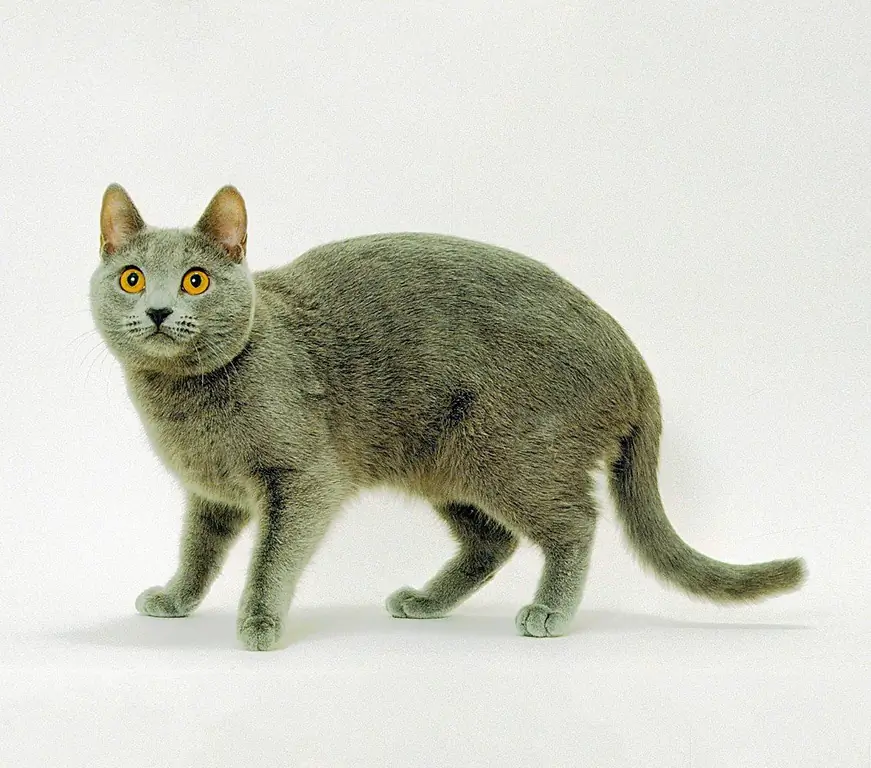
Where is the Chartreuse breed of cats bred, what are the main external differences, what character it has, how to properly care for the breed, how to choose a kitten
Belgian (Bengal Cat): Description Of The Breed, Character And Habits, Maintenance And Care, Owner Reviews, Photos
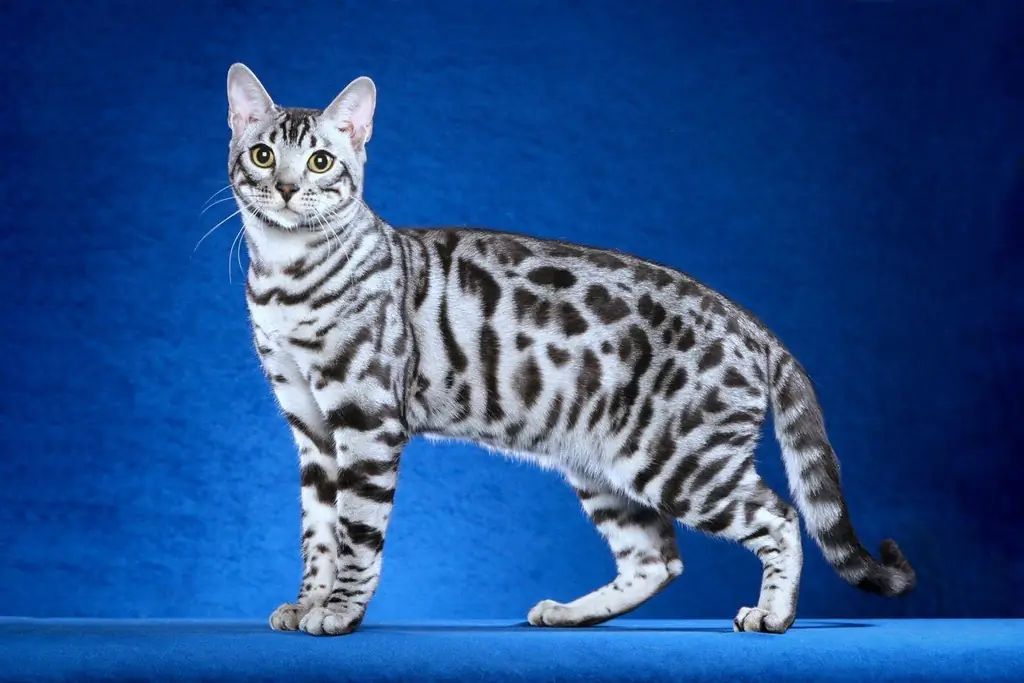
The history of the origin of the breed. The appearance of a Bengal cat. Bengal character. Health. How to take care of your pet. How to choose a kitten. Reviews
York Chocolate Cat: Description Of Appearance, Character And Behavior, Care And Feeding, Breed Photos, Owner Reviews
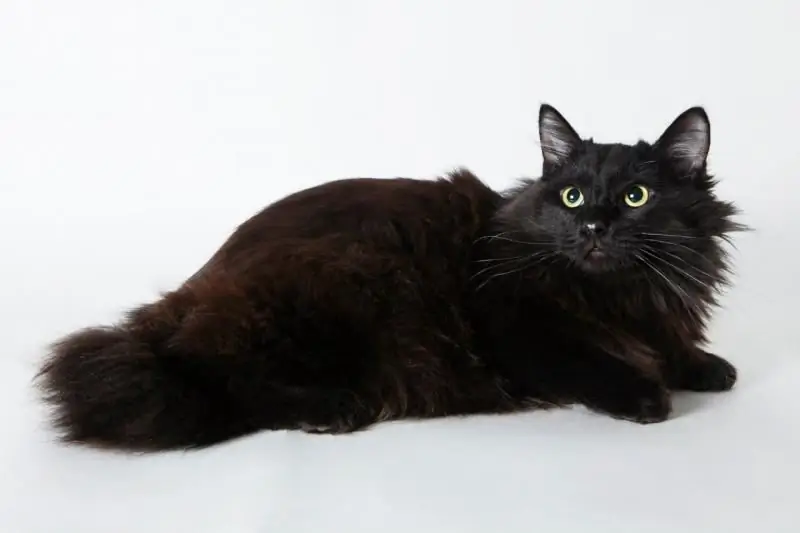
Where is the breed bred, what are the main external differences, what character does the York chocolate cat have, how to properly care for and feed it
Anatolian Cat: Features Of The Breed's Appearance, Care And Maintenance Of The Cat, Character And Habits, Breeding Pets, Owner Reviews
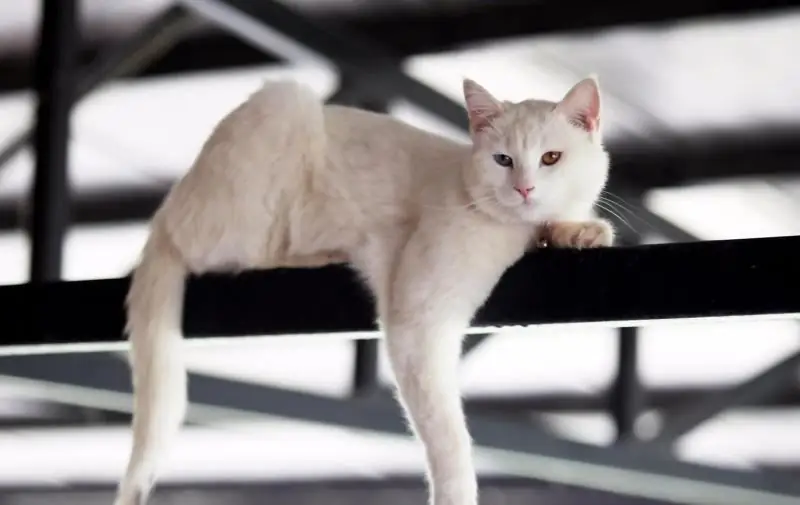
Where the Anatolian breed is bred. The main external differences, the nature of the pet. How to properly care for him, feed him. How to choose a kitten. Breeding. Reviews
Don Sphynx: Description Of The Appearance And Nature Of The Brush Breed, Features Of The Velor Cat, Photos, Reviews
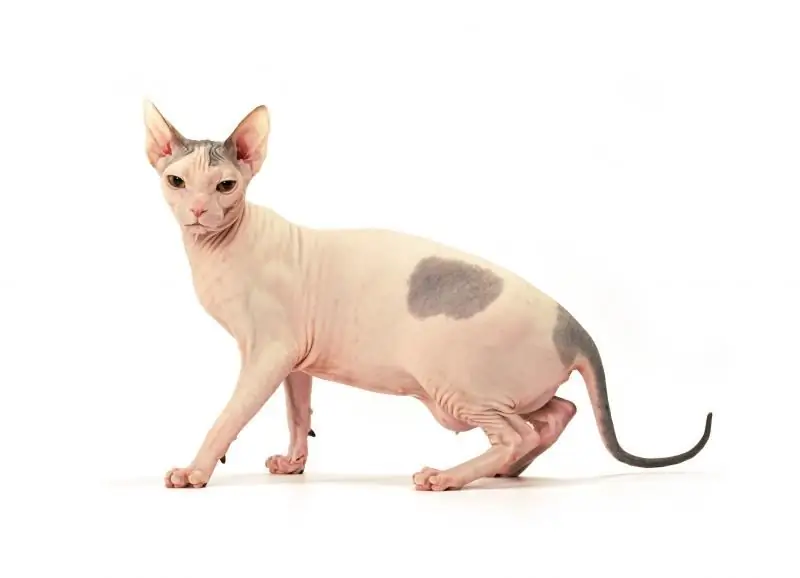
The history of the origin of the Don Sphinxes. Breed standard. How to take care of an animal. How to choose a kitten. Health. What to feed. Breeding features. Reviews
